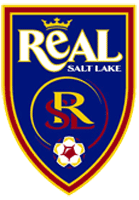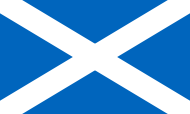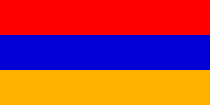Real Salt Lake
 |
||||
| Full name | Real Salt Lake | |||
|---|---|---|---|---|
| Nickname(s) | Royals, RSL, Real, Monarcas | |||
| Founded | 2004 | |||
| Stadium | Rio Tinto Stadium Sandy, Utah (Capacity: 20,008) |
|||
| Owner | ||||
| Head Coach | ||||
| League | Major League Soccer | |||
| 2009 | Western Conference: 5th Overall: 8th Playoffs: Champions |
|||
|
||||
Real Salt Lake is an American professional soccer club that participates in Major League Soccer. The club joined the league as an expansion team in 2005, and plays its home games at Rio Tinto Stadium in Sandy, Utah, a suburb of Salt Lake City. They are the current MLS Cup champions. The team colors are claret red, cobalt blue, and Real gold.[1]
History
Salt Lake City was formerly home to the USL Second Division's Utah Blitzz, which folded about the time Real Salt Lake formed. The Blitzz had won the USLSD's championship in their final year of existence. Blitzz head coach Chris Agnello was hired as an assistant coach for Real Salt Lake, but left after their inaugural season.
RSL's first head coach was John Ellinger, former coach of the Under-17 United States national team and the head of USSF's Bradenton Academy. After being replaced by Kreis, Ellinger remained with the team as technical director/director of soccer operations through August 2007. Their current coach is MLS all-time regular season scoring leader Jason Kreis. He retired as a player on May 3, 2007 and took over coaching duties. Kreis was also RSL's first player signed.
RSL's major rivals are the Colorado Rapids, which it competes with for the annual Rocky Mountain Cup, which it won in the 2007, 2008, and 2009 seasons. It is also rivals with Chivas USA as they entered the league at the same time.
On November 17, 2006, Xango announced a multi-million dollar deal to be advertised on the front of RSL's jersey. Nearly a month later, RSL announced the high-profile acquisition of the American teenage phenomenon Freddy Adu for the 2007 season. Adu later left Real Salt Lake midway through the season to play in Portugal.
After failing to make the playoffs in their first three seasons, RSL ended their playoff drought in 2008 by clinching a spot due to some last minute heroics by forward Yura Movsisyan, who scored an equalizing goal against the rival Colorado Rapids. Real Salt Lake went on to defeat their first round opponents, Chivas USA (a fellow 2005 expansion team) to advance to the Western Conference Final against the New York Red Bulls. RSL lost the game 1-0 after several last second shots were denied by the goal posts. The 2008 season was a Cinderella season of sorts, but one the team looks to steadily build upon as they establish themselves as an elite MLS team.
Champions 2009
Real Salt Lake was the last team to qualify for the MLS playoffs in 2009. As the eighth overall seed, but the fifth place finisher in the Western Conference, the club was moved to the Eastern Conference playoff bracket. They defeated the defending champions Columbus Crew 4-2 on aggregate, and won the Eastern Conference championship by beating the Chicago Fire on penalty kicks after a 0-0 draw in regulation.
Real Salt Lake defeated the Los Angeles Galaxy during the MLS Cup November 22 at Qwest Field.[2] Real Salt Lake played the L.A. Galaxy to a 1-1 tie through overtime and won the MLS cup (5-4 on penalties) to complete the upset.[3] Real Salt Lake has qualified for the group stage of CONCACAF Champions League 2010-2011.
Real Salt Lake were formally honored by President Barack Obama on 4 June 2010 at a white house press conference. At the conclusion of the press conference Obama was presented with a Real Salt Lake jersey with his name on the back and the number 10.
CONCACAF Champions League 2010-11
Real Salt Lake were placed in group A of the CONCACAF Champions League. The other three teams include Cruz Azul of Mexico, Toronto FC of Canada and Arabe Unido of Panama. Real Salt Lake started their CONCACAF Champions League tournament on August 18 at Rio Tinto Stadium playing the Panama's champions Árabe Unido. Real Salt Lake defeat Árabe Unido 2-1 with both goals scored by RSL's Alvaro Saborio. Next Real Salt Lake heads down to Mexico City to take on Cruz Azul. August 25th Real Salt Lake took on Cruz Azul in Mexico City. No US team has ever won in Mexico City and RSL looked to be the first. Late in the game RSL had a commanding load of 3 goals to 1 over Cruz Azul. RSL were about 12 minutes away from making history. However Cruz Azul wasn't about to go down quietly. Within 12 minutes Cruz Azul put four goals on RSL to make the final score of 5-4 over Real Salt Lake.
Team name
The title "Real" (Spanish pronunciation: [reˈal]) is derived from the Spanish language where it is traditionally used by certain Spanish football clubs such as Real Madrid of La Liga. It is translated into English as "royal" and it is taken by teams that make the King of Spain an honorary member of the club.
Dave Checketts and SCP Worldwide partners Dean Howes, Kenneth Munoz, Michael McCarthy, and Chris Bevilacqua chose Real Salt Lake for the team's name because they desired to associate the team with a successful soccer club, Real Madrid, as well as to develop a brand that was clearly associated with association football.
The choice of Real Salt Lake was initially met with derision in the fan community, as many fans thought the name should more accurately reflect the Salt Lake area. Other team names considered were Salt Lake City Highlanders, Salt Lake Soccer Club, Alliance Soccer Club and Union SLC.[4] However, in the passing years, criticism from local fans and the media has waned, and the club has instituted a formal relationship with Real Madrid.[5]
Stadium issues
In 2005 a soccer-specific stadium for the team was approved for Sandy, a suburb of Salt Lake City. However, funding for the stadium was still hard to come by. A vote in early 2006 struck down a funding proposal for the stadium. However, Tom Dolan, the mayor of Sandy, said that he would not give up on his fight to approve the proposal in Sandy. The funding plan was revised, but was struck down later in 2006 over disagreements in the appropriation of millions of hotel-tax dollars for a financially unproven sports franchise. The proposal for Sandy was declared "dead" by Checketts at that point, putting the team's future in doubt. Dave Checketts said that he wanted the team to remain in Utah, but would sell it if a proposal was not put forward by August 12, 2006. In 2005 The team was almost sold to St.Louis.
Parties from several cities, including Rochester, New York[6] and St Louis, Missouri, expressed interest in purchasing the franchise and moving it. Other stadium sites in the area were also proposed, including the Utah State Fairgrounds in Salt Lake, and the tiny town of Vineyard, just west of Provo. Finally, on the very day Checketts had set as a deadline to have a stadium plan in place or decide to sell the team, and after months of up and down discussions with local municipalities, county, and state officials and a change in the funding structure, a tacit agreement between Checkets, Sandy City, and Salt Lake County was put in place, and Real Salt Lake announced that they would move forward with the construction of Real Salt Lake Stadium,[7] which would ultimately be named Rio Tinto Stadium. The groundbreaking, coinciding with the Xango Cup, Real's match against international power Real Madrid, took place that afternoon featuring elected leaders, team officials, as well as the entire rosters of both Real Salt Lake and Real Madrid. On August 15, the deal was officially approved by the Salt Lake County Council.[8]
The stadium plan encountered difficulties however after the Debt Review Committee of Salt Lake County voted against the stadium proposal 4 — 0 on January 26, 2007 citing what they saw as Real Salt Lake's financial inviability as the reasoning behind the lack of support. County mayor Corroon concurred with the DRC and the stadium plan was effectively killed on January 29, 2007. In response Real Salt Lake's owner announced the team would be sold and likely move out of the Salt Lake area after the 2007 season.[9]
On January 30, 2007, local private business expressed serious interest in keeping the team in Utah. Anderson Geneva, in response to the stadium rejection, offered the club 30 acres of land on which to build their stadium and multi use center, and offered the land for free. The land was estimated to be worth US$10 million.
The Sandy Stadium proposal was not completely dead, however: a new stadium proposal was made on February 2, that would divert 15 percent, roughly $2 million a year, of the county's hotel taxes to the stadium project beginning in July until 2017.[10] Such a deal would have to have been made by February 9, or the deal would have been completely off.[11] The bill was passed by the State Senate.[12]
After Governor Huntsman made a move that would allow the team to remain in Salt Lake County: the Utah House approved House bill 1SHB38, by a 48-24 margin, effectively approving $35 million towards the development of Real Salt Lake's new home. The governor was expected to sign the bill,[13] and ultimately did so.
Sandy City, along with the state of Utah and representatives of the team, finally came to an agreement regarding the placement of the Real stadium. The deal was shot down about a week prior to the agreement by the Salt Lake County Mayor Peter Corroon saying it was too risky. However, Utah's governor, Jon Huntsman, Jr. said that soccer was here to stay. The $110 million dollar stadium was built in Sandy, a suburb of Salt Lake City. Rossetti's California office was the architecture firm responsible for the design of the new stadium. The stadium's opening date was set for October 9, 2008, when Real Salt Lake hosted the New York Red Bulls.[14]
Real Madrid and Youth Academy
As of September of the 2006 season, Real Salt Lake and Real Madrid have signed a 10-year co-operative agreement. Among the provisions of the deal are a biennial friendly match between the two teams to take place in Salt Lake City, annual February training for RSL at the Real Madrid practice facility in Spain, and, perhaps most importantly, the creation of a $25 million elite youth academy in SLC that will train up to 200 players from ages 12 to 18.[15] The academy, a co-operative project for which Real Madrid will pay half the cost, will include academic facilities and dormitory housing, arguably becoming the first true soccer "youth system" in MLS, along with the Red Bull Academy effort of Red Bull New York. In this sense, it is part of a growing league-wide trend toward the emphasis of youth development, a trend which has been encouraged by the main office and jump-started by the league's decision to allow individual teams to maintain rights to the products of potential youth development systems.
Rocky Mountain Cup
With Major League Soccer's expansion in 2005, Real Salt Lake became the second team in the Rocky Mountain region and the Colorado Rapids' closest neighbor. The supporters of the two clubs created a competition between the two sides to foster and memorialize this budding rivalry. Colorado won the Rocky Mountain Cup in its inaugural year, 9 points to 3, and successfully defended the Cup in 2006 by a margin of 7 points to 4. Real Salt Lake won the Rocky Mountain Cup in the 2007 Season, 7 points to 4 points, and defended the cup successfully in 2008 and 2009.
Supporter Groups
Real Salt Lake has 5 official supporters groups, The Loyalists, RCB (Rogue Cavaliers Brigade), Section 26, La Barra Real, and the newest group TRP (The Royal Pride). At Rio Tinto Stadium most supporters are in the south stand.
Television and radio
Radio broadcasts are on KALL AM 700 (English) and KTUB AM 1600 (Spanish)
KUTV will handle local television broadcasts, with most matches broadcast on KUTV's digital television channels.[16]
Stadiums
- Rice-Eccles Stadium (2005–2008)
- Rio Tinto Stadium (2008-)
Songs
The post-victory song is the Bob Marley anthem, "Iron Lion Zion". It was decided after an internal vote, because it fit the team's criteria for a celebration song. The team anthem is called “The Mighty R-E-A-L” and is performed by Indie rock group and Utah natives Meg & Dia.[17] There is an alternate anthem created by Alban and Tony of the CBG called "RSL Anthem." [18] When a goal is scored by Real Salt Lake in Rio Tinto Stadium, the song The Sweet Escape by Gwen Stefani is played throughout the stadium.
Club Honors
Domestic
- MLS Cup
- Winner (1): 2009
- Eastern Conference
- Winner (1): 2009
- Western Conference
- Runner-Up (1): 2008
Minor Trophies
- Rocky Mountain Cup
- Winner (3): 2007, 2008, 2009
- Runner-Up (2): 2005, 2006
- Carolina Challenge Cup
- Winner (1): 2009
- Runner-Up (1):2010
Players
Current roster
As of May 13, 2010.[19]
Note: Flags indicate national team as has been defined under FIFA eligibility rules. Players may hold more than one non-FIFA nationality.
|
|
Notable former players
This list of former players includes those who received international caps while playing for the team, made significant contributions to the team in terms of appearances or goals while playing for the team, or who made significant contributions to the sport either before they played for the team, or after they left. It is clearly not yet complete and all inclusive, and additions and refinements will continue to be made over time.
 Freddy Adu (2007)
Freddy Adu (2007) Gustavo Cabrera (2005)
Gustavo Cabrera (2005) Jeff Cunningham (2006-07)
Jeff Cunningham (2006-07) Kenny Deuchar (2008)
Kenny Deuchar (2008) Alecko Eskandarian (2007-08)
Alecko Eskandarian (2007-08) Scott Garlick (2006)
Scott Garlick (2006) Chris Klein (2006-07)
Chris Klein (2006-07) Jason Kreis (2005-07)
Jason Kreis (2005-07) Clint Mathis (2005, 2008-09)
Clint Mathis (2005, 2008-09) Yura Movsisyan (2007-09)
Yura Movsisyan (2007-09) Eddie Pope (2005-07)
Eddie Pope (2005-07) Douglas Sequeira (2006)
Douglas Sequeira (2006) Luis Tejada (2007)
Luis Tejada (2007)
- See also All-time Real Salt Lake roster
Head coaches
 John Ellinger (2005-07)
John Ellinger (2005-07) Jason Kreis (2007-)
Jason Kreis (2007-)
Team records
- Games:
 Andy Williams, 128
Andy Williams, 128 - Goals:
 Robbie Findley, 25
Robbie Findley, 25 - Assists:
 Javier Morales, 22
Javier Morales, 22 - Shutouts:
 Nick Rimando 25
Nick Rimando 25 - Single Season Goals:
 Jeff Cunningham, 16 (2006)
Jeff Cunningham, 16 (2006) - Single Season Assists:
 Javier Morales, 15 (2008)
Javier Morales, 15 (2008)
MLS regular season only, through 2009 season
- All-Time regular season record: 42-72-40 (Through Oct. 30 2009)
Year-by-year
| Year | Reg. Season | Playoffs | Open Cup | CONCACAF Champions' League |
SuperLiga |
|---|---|---|---|---|---|
| 2005 | 5th, West | Did not qualify | Third Round | Did not qualify | Started in 2007 |
| 2006 | 6th, West | Did not qualify | Fourth Round | Did not qualify | |
| 2007 | 6th, West | Did not qualify | Did not qualify | Did not qualify | Did not participate |
| 2008 | 3rd, West | Semifinals | Did not qualify | Did not qualify | Did not participate |
| 2009 | 5th, West | Champions | Did not qualify | Did not qualify | Did not qualify |
| 2010 | Did not qualify | Did not qualify (09-10) | Did not qualify | ||
| 2011 | Qualified to group stage (10-11) |
Average attendance
regular season/playoffs
- 2005: 18,037/missed playoffs
- 2006: 16,366/missed playoffs
- 2007: 15,960/missed playoffs
- 2008: 16,179/19,632
- 2009: 16,375/11,499
Notes and references
- ↑ Real Salt Lake colors
- ↑ "Salt Lake beat L.A. Galaxy to MLS title". ESPN. 2009-11-23. http://soccernet.espn.go.com/news/story?id=702587&sec=global&cc=5739. Retrieved 2009-11-23.
- ↑ "David Beckham, L.A.Galaxy stars fizzle as Real Salt Lake wins MLS title in shootout, 5-4". NY Daily News. 2009-11-23. http://www.nydailynews.com/sports/more_sports/2009/11/23/2009-11-23_mls_title.html. Retrieved 2009-11-23.
- ↑ USSoccerPlayers: Sounders Already Scoring
- ↑ Real Madrid will be back in '08
- ↑ Rhinos confirm talk with MLS club in Utah
- ↑ Real Salt Lake joined by Real Madrid Saturday at 12:00 noon to break ground on Sandy stadium site
- ↑ KUTV news - Soccer stadium finally a ReALity
- ↑ KSL Newsradio: Soccer stadium deal is dead
- ↑ Stadium plan: It's ba-a-ack!
- ↑ Stadium deal due by Friday — or else
- ↑ Senate paves way for a Sandy stadium
- ↑ Utah House approves stadium funds
- ↑ "RSL confirms Oct. 9 stadium opening". The Salt Lake Tribune. 2008-08-05. http://www.sltrib.com/sports/ci_10105238. Retrieved 2008-08-05.
- ↑ Salt Lake Tribune article announcing the RSL-RM deal
- ↑ http://web.mlsnet.com/news/team_news.jsp?ymd=20090320&content_id=228204&vkey=pr_rsl&fext=.jsp&team=t121
- ↑ adidas MLS Soccer
- ↑ [1]
- ↑ http://web.mlsnet.com/players/index.jsp?club=t121
Official Sponsor
- XanGo
External links
|
||||||||||||||||||||||||||||||||||||||
|
||||||||||||||||||||||||||||
|
||||||||||||||
|
|||||||||||||||||||||||||||||||||||
